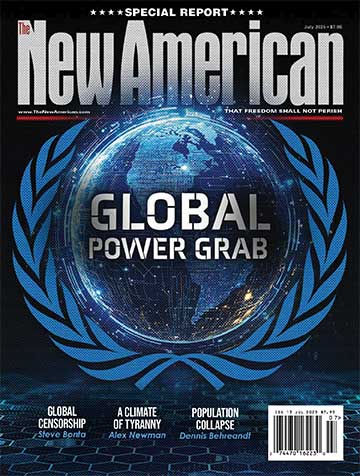
In the run-up to an election, we so often hear people of a certain political persuasion swear that if ______ (fill in the blank) wins the presidency, they’ll leave the U.S. They never seem to, of course. Yet this doesn’t mean Americans aren’t voting with their feet.
In fact, say some analysts, a “Big Sort” is occurring in which conservative Americans are fleeing liberal states for “red” ones, while leftists are more likely to stay in their “blue” bastions and may even, to a lesser extent, move to such places from more traditionalist locales.
This phenomenon is making Florida, for example, more conservative, say these analysts; and it should mean generally that red states will become redder and blue states, bluer, as the U.S. bifurcates ideologically.
What’s more, this isn’t the only way in which we’re increasingly becoming “two Americas.”
Finding Their Own Sort
It used to be that northerners would move south and with their more liberal voting habits pull their new states left (e.g., North Carolina actually voted for Barack Obama in 2008). Yet if the new analysis is correct, this has changed somewhat. The Orlando Sentinel reports on the phenomenon:
New estimates from the U.S. Census Bureau this month showed that movement is continuing, with hundreds of thousands of people leaving states such as New York, Illinois and California and moving to Florida and Texas in 2022 and 2023.
“The notion of the ‘Big Sort’ … is really proving itself,” said Matt Isbell, a Democratic elections analyst. “That’s the idea that people move based on the politics. … For a lot of retirees, places like Florida are appealing, especially if they’re already conservative.”
According to Census estimates, New York lost nearly 217,000 people to domestic migration from July 2022 to July 2023 and nearly 882,000 since April 2020. New Jersey, Pennsylvania, Illinois, Wisconsin and Michigan also lost thousands of residents in that time.
At the same time, Florida gained more than 194,000 people from other states from 2022 to 2023, the largest influx in the nation. Since April 2020, nearly 819,000 people have moved to Florida from within the U.S.
Many of those new residents may have been attracted to Florida because they see it as a right-leaning state, said J. Miles Coleman, associate editor of Sabato’s Crystal Ball at the University of Virginia Center for Politics, especially amid Gov. Ron DeSantis’ opposition to almost all COVID-19 restrictions.
Note that Texas’ interstate influx may be pulling it left, the Sentinel further reports. This may partially be because while Florida is attracting more retirees, the Lone Star State’s newcomers are generally younger.
What Changed? People — or Party?
As for Florida’ newcomers, the Sentinel points out that while many are fiscally conservative but still socially quite liberal, they nonetheless are voting Republican. Coleman said that these people may “hold their noses” regarding the GOP’s social policies because the party’s fiscal positions appeal to them. But is this a complete explanation?
In reality, neither major party talks much anymore about our budget deficits, and both spend like drunken sailors (though the Dems are worse). Something else has changed, too, however:
The Democrats have moved so far “left” in recent years that they’ve left more conventional liberals on, relatively speaking, the “right.” (Remember that “right” and “left,” “conservative” and “liberal,” are relative terms relating to position on the given country’s political spectrum. As that spectrum moves, so will a person’s position on it assuming his ideology remains constant.)
For example, the Democrats now embrace/facilitate the MUSS (Made-up Sexual Status, aka “transgender”) agenda, the related sexualization of children in schools, unfettered illegal migration, and aggressive racialism such as identity politics and critical race theory; they’ve also made their large cities increasingly unlivable via sanctuary policies, turnstile “justice,” and over-regulation. Consequently, many people who never intended to leave the Democratic Party realized, eventually, that the party had left them — and reacted accordingly.
This is reflected in the #WalkAway movement, but a specific representative example is billionaire industrialist Elon Musk. He announced in recent years that he’d voted Republican for the first time in his life, yet how much has his own ideology really changed?
The result of this burgeoning leftist radicalism is that two-Americas phenomenon. Inter-state migration is just part of it, too. Consider also:
- There’s a mass exodus from the government school system, and conservatives likely constitute an inordinate number of those exiting.
- Conservatives are censored mercilessly by most major social media, making them more likely to use friendlier platforms such as X.
- Liberals and conservatives are also increasingly patronizing different businesses.
- With many January 6 protesters persecuted unjustly, sometimes merely for being present on the fateful day, traditionalists are realizing that their demonstrations are unwelcome in “their” own nation’s capital. They may then ask: Is it really still my capital?
- In this vein, leftists’ “cancel culture” has made clear that conservatives have no place in their world; this encourages traditionalists to embrace a parallel world.
- Conservative and liberal states are bifurcating policy-wise, with the former often legislating against schemes such as the MUSS agenda and racialist efforts (e.g., DEI), and the latter embracing them more aggressively.
Now just plot our civilization’s trajectory. If we saw a couple that didn’t get along and increasingly went their separate ways culturally and socially, would we think it’d be long before they separated legally as well?
Of course, divorce is far messier when it involves not two people but 335 million. But are we, in these Divided States of America, not on the same forked-road path?




